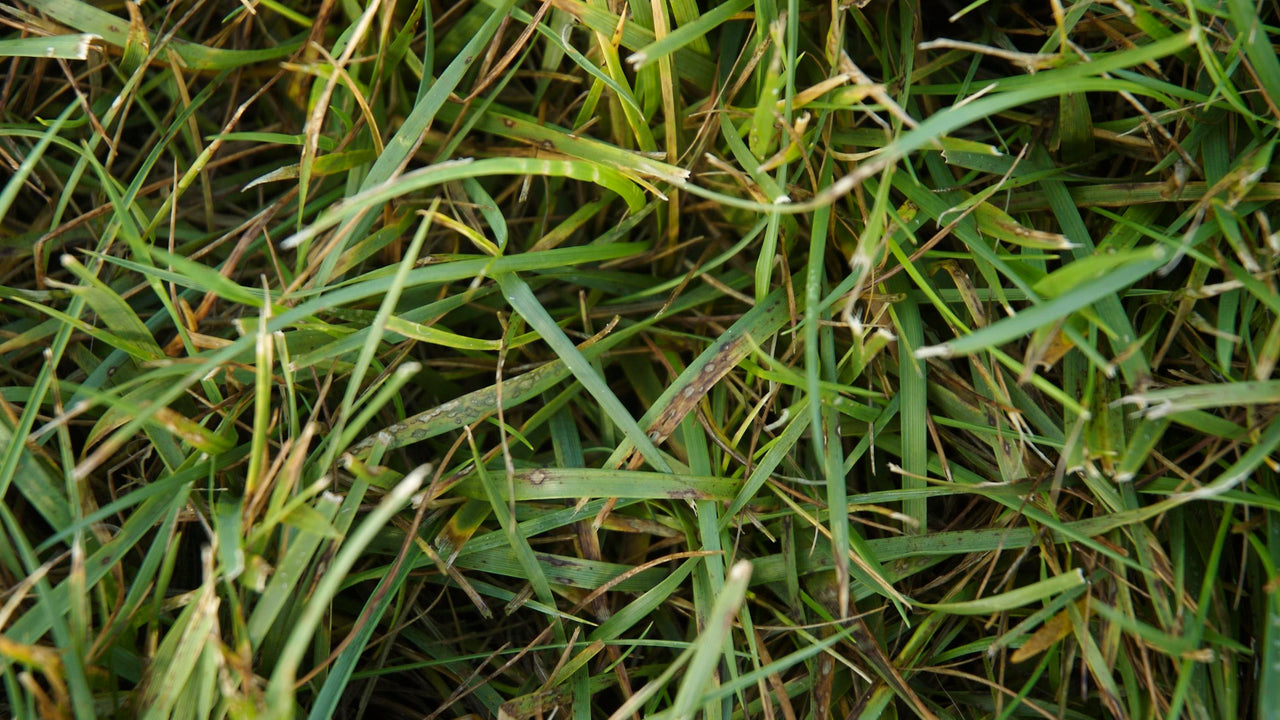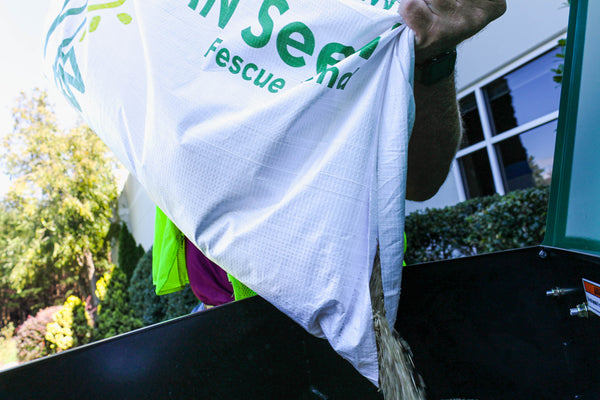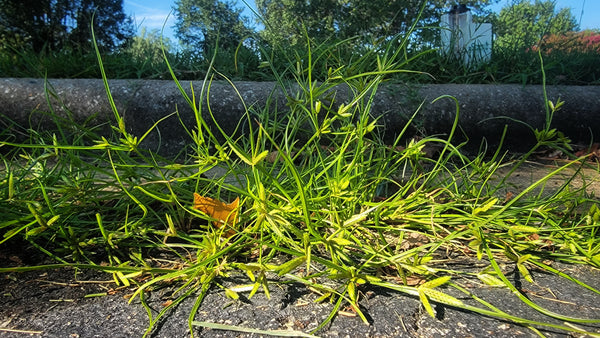Photo Credits: NC STate https://www.turffiles.ncsu.edu/diseases-in-turf/gray-leaf-spot-in-turf/
Gray Leaf Spot (GLS) has become an increasing problem in Turf-type Tall Fescue Lawns with more sights each year in the transition zone. GLS is commonly seen when temperatures are above 70°F with moisture on the turfgrass for 14 consecutive hours.
With the normal maintenance of Tall Fescue, which is usual cut at 3 ½ to 4 inches tall, it allows moisture to be retained due a dense canopy and reduced air movement. Now cutting Fescue does not help the grass out as it will struggle during the hot summer month with producing photosynthesis or drying out completely to the point of death.
Turf-type Tall Fescue is not the only type of grass susceptible to GLS, as it is commonly seen in St. Augustinegrass and some varieties of Perennial Ryegrass.
With yard being maintained on a fungicide program that is heavy on using Azoxystrobin (Heritage) will not have great results controlling GLS. Switching up fungicide is needed for best results controlling GLS.
Reducing GLS through Cultural Control
Many maintenance practices can be used to reduce GLS including proper mower heights, proper fertilization schedule, irrigating in the mornings instead of in the evenings, and others.
With Fescue, it should be maintained at 3 ½ inches during the growing months and should be mowed regularly. During the late spring when it is growing at its best, mowing multiple times a week might be necessary. Only remove the top 1/3 of the leaf blade when mowing, this will allow for proper grass clipping distribution.
Following a proper fertilization program is key to keeping diseases at bay. Too much nitrogen can cause unwanted growth that can create mowing problems along with stressed turfgrass. Applying high nitrogen products when the turfgrass is stressed (during the summer months or when it is bone dry) can increase disease activity.
Irrigation is one of the biggest problems with promoting GLS. Irrigation is needed, but applying at the wrong time can be detrimental to your lawn. Irrigate during the early mornings before heat is too high that water will immediately evaporate. Excess moisture that remains on the lawn during a warm night can cause serious disease pressure.

Controlling GLS through Fungicides
Fungicides combined with good cultural practices can keep your lawn from dying from GLS and other fungus. Certain products, like Cleary’s 3336F, work better than others with controlling GLS.
Combining multiple products can give better control along with reducing fungicide resistance. According to NC State’s latest studies, fungicide products Headway, Fame, Enclave, and Spectro all received 4/4 efficacy ratings at of most products currently out on the market for home lawn use. Cleary’s 3336F (active: thiophanate-methyl) is the only single fungicide that received the highest rating.
Creating a good rotation program of multiple fungicide groups will reduce fungicide resistance while still giving great control. When combining or apply singular products, be sure to check longevity of product and apply the next round within the allotted time when disease pressure is high.
Check out NC State’s GLS information to learn more about the disease and what other fungicides can be used on it: https://www.turffiles.ncsu.edu/diseases-in-turf/gray-leaf-spot-in-turf/




